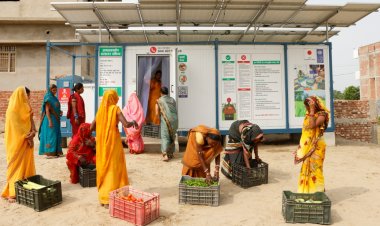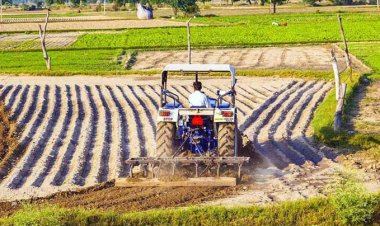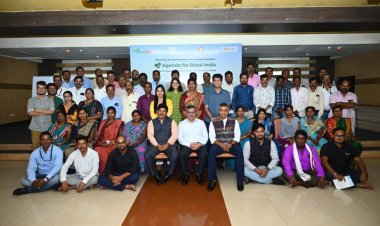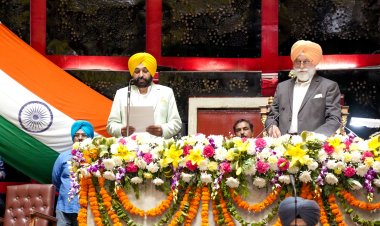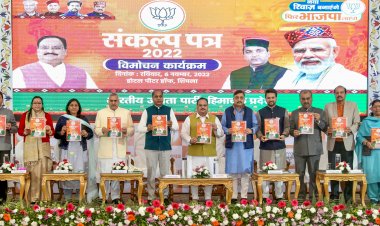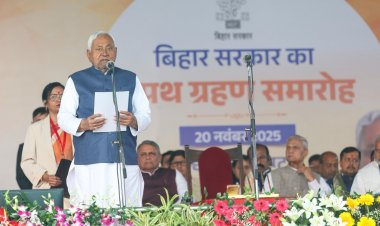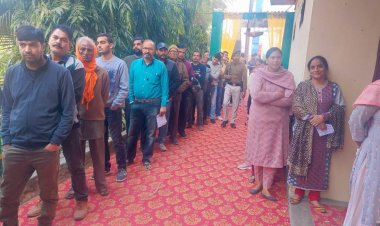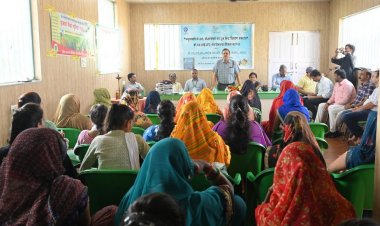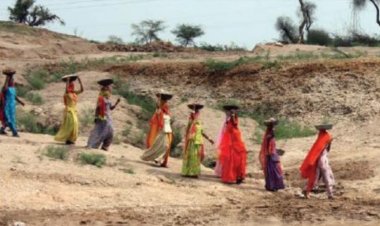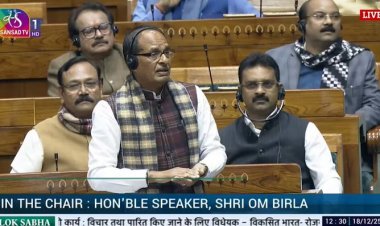Why the current farmers’ movement is bigger than Champaran and Kheda
Farmers will return from the encampments set up on the Delhi borders to their homes today December 11 after the recitation of the Guru Granth Sahib and havan. The farmers’ movement that lasted for 378 days has created such a place for itself in national and world history that at this juncture one can’t even imagine it would ever be repeated. Besides changing the attitude towards agriculture and the farmers, this movement has for the first time after the 1991 economic liberalization policies brought agriculture to the centre stage of policymaking, parliamentary debate, political discussions and economic policies.
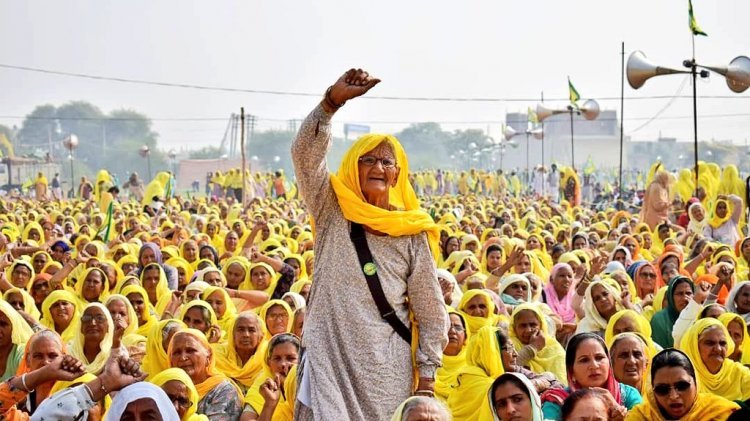
Farmers will return from the encampments set up on the Delhi borders to their homes today December 11 after the recitation of the Guru Granth Sahib and havan. The farmers’ movement that lasted for 378 days has created such a place for itself in national and world history that at this juncture one can’t even imagine there would be another of this kind. The near-peaceful movement against the three farm laws promulgated by the Union Government through ordinances in June 2020 has strongly registered several democratic values and the success of non-violent protest. This is the biggest example in recent decades where the ideals of Mahatma Gandhi have been followed. One which had at its centre non-violence, patience and the strong sense of purpose of the protesting farmers. This movement may well be considered the most successful farmers’ movement ever, both pre- and post-Independence, in terms of integrity and attainment of objectives. Besides changing the attitude towards agriculture and the farmers, it has for the first time after the 1991 economic liberalization policies brought agriculture to the centre stage of policymaking, parliamentary debate, political discussions and economic policies.
It is these factors that set this movement apart in history from the Deccan Riots, the Malabar rebellion, and the farmer movements at Champaran, Kheda and Bardoli. In May and June 1875, peasants of Maharashtra in some parts of Pune and Ahmednagar districts burnt and destroyed the bonds, decrees, and other documents in the possession of the moneylenders. This violent farmers’ movement, therefore, came to be known as the Deccan Riots. During 1921-22, the Muslim peasants of the Malabar region of Kerala also launched violent protests against the moneylenders. This came to be known as the Malabar rebellion or Moplah riots. However, the movement launched by Gandhiji at Champaran, the one under his leadership at Kheda and the one launched by Sardar Patel and other farmer leaders at Bardoli were all non-violent in nature. The Patidar farmers participated in the Gujarat farmers’ movement. The current farmers’ movement also remained non-violent like the ones at Champaran, Khera and Bardoli. But it scored over these movements in its broadness, thus proving bigger and more successful than the earlier movements.
When the farmers started opposing the three new farm laws, the first stirrings of the protests did not give this writer the impression that farmers would script a new history of farmers’ movements in the days to come. In the initial days, neither the leadership of the movement was very clear or effective nor could one see the farmer organizations coming together on a big platform. More than 30 farmer groups intensified their protests in Punjab, but one could not sense how a motley bunch of farmer groups would sustain the movement and hold together. In Haryana, too, no big organization was seen running the movement while in Uttar Pradesh (UP), two farmer organizations started protesting the farm laws.
However, with every passing day, the movement went on gaining in size and coverage and improved in making the strategy for getting the demands accepted and implementing it. From September 2020 onwards, it started assuming a national character. The organizations started coordinating among themselves, which resulted in the announcement of the march to Delhi on November 26, 2020, and the decision to call for Bharat bandh on December 8, 2020. This was followed by the farmers reaching the Delhi borders on November 27, 2020, and the farmers from Punjab and Haryana uniting. The setting up of camps started on the UP border on November 29. All of this was gradually contributing to the movement taking a national shape. This coordination resulted in the Samyukt Kisan Morcha (SKM), a united front of 40 farmer organizations, which not only decided the conditions for negotiations with the government but also remained adamant on the main demand until the end of the movement. The failure of 11 rounds of talks, the case reaching the Supreme Court, the apex court forming a committee, the tractor march in Delhi and Red Fort violence on January 26, 2021, the breakdown of negotiations on January 22 — all of these went on becoming stages of the movement, but the movement continued.
There was backdoor diplomacy; thousands of cases were registered against the farmers; according to SKM, more than 700 farmers died during the movement. Despite all this, barring the odd occasions on January 26 and January 28 evening, it did not appear at any point that the movement was weakening, that the protesters were yielding, that the farmers were losing heart. True, the leadership did have apprehensions many a time that the government would not repeal the three laws at any cost. This is the only movement that has gone through winter, summer and the rains on the borders of Delhi and suffered the miseries inflicted by them.
With every difficulty, however, the movement rattled the collective psyche of the nation, especially the minds of those who understand even a little about farming, farmers, villages and about those whose life depends on farming. There were various allegations and counter-allegations, media management, pressure by proxy, but the farmers participating in the movement and the leadership of the movement stuck to their demand. The movement succeeded in driving home to every section of society the fact that “farmers could return to their homes only after the three laws were repealed” and the demand for a legal guarantee of Minimum Support Price (MSP).
A significant aspect of the movement was the support it received from the social order and cultural arena. Khap panchayats, which are often on the receiving end of allegations from the media because of the latter’s viewpoint, proved itself to be a crucial mechanism for inspiring the farmers during the movement. The langars (charity kitchens) of the gurdwaras and the community service of the Sikhs served as the backbone of the movement. The mainstream singers, folk singers and cultural personnel from Punjab and Haryana constantly provided emotional support to the protesting youths, elderlies, children and women to stand by their demands. This had never been seen on such a wide scale in any movement so far.
This is for the first time in the past several decades that the agricultural sector, agricultural policy, farmers and rural economy have received so widespread coverage across the media spectrum, be it print, digital or electronic. These topics were never debated so hotly in recent memory. Besides, the movement has also created a new record for the coverage that India has received in the international media. For the global media, too, not only did this movement come as a surprise but it also served as an example. In recent decades, there has been no such movement in any part of the world with such large participation and lasting for so long a period.
There are some relevant points about the comparison made at the beginning of this article. The Champaran movement gained strength and succeeded as Mahatma Gandhi participated in the movement. At Kheda and Bardoli in Gujarat, too, the farmers had with them the leadership of the likes of Gandhi and Patel. But the current farmers’ movement did not have any such charismatic leadership. Despite this, the movement continued and succeeded. The beauty of this movement is that it gave birth to collective leadership. The collective leadership of a host of organizations working for a common purpose with a cooperative approach has shown that charismatic leadership is not necessary for a grand success. Besides, it is possible to implement a decision taken in a democratic manner rather than under the aegis of a mega personality.
So, today on December 11, when farmers start returning from the Delhi borders, they have a collective organizational structure of leadership in the form of SKM that can raise their issues and fight for them. Besides, the farmers’ movement that lasted for more than a year has brought those faces of farmer leaders before the country whom people now recognize. Be it the national spokesperson of the Bharatiya Kisan Union (BKU) Rakesh Tikait, Balbir Singh Rajewal, Ashok Dhawale, Joginder Singh Ugrahan, Gurnam Singh Charuni, Darshan Pal, Yogendra Yadav, Yudhvir Singh or other farmer leaders, they have become well-known faces among farmers across the country.
Secondly, while the Champaran movement was limited to the issues of indigo farmers and to a certain geographical area of Bihar, the Deccan Riots, the Malabar rebellion and the movements at Kheda and Bardoli were mainly limited to the financial distress of the farmers in their respective geographical areas. As far as the current movement is concerned, if we go merely by the presence of farmers at the encampments, we may not see pan-India participation. But the geographical expanse of this movement in terms of the activity witnessed in states like Rajasthan, Punjab, Haryana, Uttarakhand and UP and the farmer panchayats held in most of the states of the country during the movement establishes it as the biggest farmers’ movement so far.
Speaking of the range of demands of the movement, it has transformed the country’s overall agricultural policy and the decisions related to it. Besides, the Bill to repeal the three farm laws was passed in Parliament with the same haste with which these laws had been promulgated by the government through ordinances for hasty implementation and subsequently passed by Parliament. One would be hard-pressed to look for another such example in the history of independent India in which a government has repealed the laws promulgated by itself in such a short period.
Only the future will tell if a law will be made on a guarantee for MSP, which was the second major demand of the movement. However, such an awareness has been created among the farmers with regard to the significance of MSP and how it serves as a means of fetching them the fair prices for their crops that it has now become the most significant issue at the core of the government’s agricultural policy.
When this writer visited the encampment of the movement at Ghazipur Border yesterday, December 10 Friday, he saw that the farmers had adorned their trolleys as if it were Diwali. Flashlights were on and lit the entire area. There were no signs of any sort of stress. Sweets were being distributed at some of the places. The police and the administration said everything would now be back to normal.
While having dinner at one of the langars, Rakesh Tikait, the most prominent face of this movement, said to this writer, “This place is lucky to have been the venue of the farmers’ movement for a year. Just like the movement became recognized across the country and the world, Ghazipur Border, too, became world-famous. Farmers will start returning to their homes tomorrow morning after the recitation of Guru Granth Sahib and havan.”
This movement witnessed many ups and downs. The movement coming to an end after an agreement between the government and the SKM on its demands is also setting a new example. True, there were no negotiations across the table between the two parties in the last phase. But the announcement by Prime Minister Narendra Modi in his address to the nation on the occasion of Gurpurab on November 19 that the three laws will be repealed, the subsequent completion of the parliamentary process of repealing the laws, and the letter from the Secretary, Union Agriculture and Farmers Welfare Ministry, to the SKM after the agreement on the demands between the government and the SKM led this movement to its culmination. This sequence of events, too, has become history in itself.



 Join the RuralVoice whatsapp group
Join the RuralVoice whatsapp group


















